We've been an analog studio for as long as we've been around, some 20 years. Although we mix down to digital as well, the Sony/MCI JH24 has been the mainstay of our control room. My son now wants to add a Hard Drive Recorder to the control room. Is the Alesis HD24 a reasonable choice?
Pierre St.Marie
Tags
Comments
Mackie has discontinued production of the HDR series recorders,
Mackie has discontinued production of the HDR series recorders, sadly. I own an SDR and love it. Converters are very good, analog I/O as well as ADAT optical. I dropped a 120Gig drive into it and have about 900Gig of external drives for backup and transferring to the computer via firewire. They were about $1300 new, don't know what the used market is. Another, pricier option would be RADAR.
k31, I think the HD24's are a decent alternative, and would rec
k31,
I think the HD24's are a decent alternative, and would recommend em'... (I currently own two.)
An alternative is a RADAR V.
The reason I mention the RADAR is the quality of the converters and overall sound. It is suppossed to be far superior to most of the converter/HD systems out there. While I haven't heard them live and in person, I have read too many posts from satisfied customers for it not to be true.
I will prbably audition a RADAR once I get my studio built.
There are two other things to consider when choosing a HD recorder system... Some sort of controller and file transfer system for either archive or DAW input.
The HD24 does not have a ready made controller (Smart move there Alesis). It's pretty aggrevating trying to use the BRC, but it will work in a pinch for a lot of the control function used on a daily basis. Quite a few folks are having success with general MMC units. The RADAR has the session controller that is an optional system purchase.
The built-in file transfer on the HD24 is a straight 10Base-T (read SLOW as hell) transfer via ftp. Definitely get the FirePort to transfer. The RADAR has an optional transfer unit, built-in; AES/EBU, ADAT Optical, TDIF.
If you want/ever need to do audio for video, the RADAR is the way to go. It has all the built-in's for dealing with video sync. Unfortunately, the HD24 doesn't... damnit!
Just my .02 worth.
Max
Pierre, It ain't owned by Otari any more... It's [[url=http://[
Pierre,
It ain't owned by Otari any more... It's [[url=http://[/URL]="http://www.izcorp.c…"]iZCorp[/]="http://www.izcorp.c…"]iZCorp[/]...
Glad I could help!!
Now about that old Sony tape unit... :-?
Max
Thanks, Max. After I read the old article I did a search and fou
Thanks, Max. After I read the old article I did a search and found that out.
I'm the second owner of this Sony/MCI JH24. I have the matching 1/4" 2 track mastering deck. It was bought new in 1988 and given every upgrade possible right before the married couple in New Jersey opened their studio. One month later, right before the studio was to open she caught him with some vocalist chick and that was that.
All of the equipment went into two bedrooms in "her" house and sat there till I came along and cashed her out of it for a (then giveaway) price of $15,000.oo
Its been well cared for in our studio ever since. I also found out today the the most its worth, even with all the upgrades not found on most of them, is $3,000.oo!! What a surprise for us! The new Radar unit is around $8,000.oo. Another "surprise" for us.
The old girl is right in the middle of a project for a Barbershop Quartet, and the sound is as pristine as ever. Too bad my Son is so set on digital. I've always preferred the sound of analog, but........... Its a young man's game now.
Pierre
Latigo and I were talking about the setup this afternoon and decided we'd put it out there with the JH24, the matching mastering deck, the full harness with elcos for both machines and the two calibration tapes and empty reels all together. We're just not sure where to advertise it, but we started with the "Classifieds" here..
Hello Pierre; Sad to say, you're probably better off selling t
Hello Pierre;
Sad to say, you're probably better off selling that as fast as you can, for whatever you can. (Unless you plan to stay in business as a niche-market analog facility.) Don't get me wrong, I love analog, and as for the the Sony/MCI-JH100 stuff, I cut my teeth on several of those professionally back in the 70s and 80's. (Just wish they had done something a little better than those molex connectors that drove the logic circuits so batty all the time....memories of those things going into FF with no rhyme or reason still give me the willies!)
If you're going to go digital, it's more than the right time for it; it's really going to be more cost effective for you in the long run. You may even want to go with software running in a dedicated computer for editing & Mixing & mastering, and use the standalone systems for tracking. With good digital and the right mics and pre's, chances are you wont miss the analog format at all. (And you CERTAINLY wont miss the hassles of aligning a 24 track machine at the start of every session.)
I'm still curious what's going to continue as the de-facto standard for 24 track all-in-one systems. A lot of them have been discontinued, including the Mackie. I have the Fostex 2424, but I suspect it might already be discontinued. It's a great machine, but it too has its limits, including a very slow LAN after-market interface, and the HDs are written to a Fostex-proprietary format. (In other words: You can't get here from there; there's no way to do drive swaps into a Windows or MAC OS environment. If you track with the Fostex, you have to either work within that framwork (which is very clumsy for edits and post production), or you have to transfer the stuff out of the machine via ADAT optical to a DAW of your choice.
Good luck with however you go, I'm sure everyone here would be interested in how you fare with the upgrade.
Another thought, Pierre..... I dont know where you're located, b
Another thought, Pierre..... I dont know where you're located, but you may want to check with Steve at Sonicraft (in Freehold NJ) for any info on the market for an MCI JH series. (http://www.sonicraft.com) I don't know if he'd be interested in either of your machines for himself, but he may know someone. worth an email or phone call to him.
At a shade under 2K for the Alesis 24xr (upgraded converters) ar
At a shade under 2K for the Alesis 24xr (upgraded converters) arounf $200 for the firewire, why wouldnt you keep the analog and simply use it for tracks and then dump into the HD? Best of both worlds. I kept my last tape machine...my 'writers' tape machine, a Tascam 38 for the longest time. It was great to track drums to and then dump that to the digital in real time. No tape pass losses and real BIG stuff...but you know that already. This is the model for the working studio of the future. Until science catches up with the pschoacoustics of tape rolling by a head, and gets the TUBE sound down to a plug-in accurately, a combination is always going to sound better, be better to work with, and have the most bling value for new customers. If you want to work 'In The Box' at this point, an 002 rack is a very cheap protools interface which will still allow all the use of all your stuff you have now and the entry cost isnt that much. Several good studios around here do this very thing and they're all still working as far as I can tell.
If you're going to go digital, then get all the way in.. ProTools HD...Huge harddrives, control surface, great converters and outboard like old school.
Thank you very much for the input, guys. We're in Lost Prairie,
Thank you very much for the input, guys. We're in Lost Prairie, 40 miles west of Kalispell in NW Montana.
I just had my son read all of this and he's actually agreeing that the system probably should stay here in the control room after all and we'll simply add a 24 track digital system.
I was having a hard time with this because I actually enjoy all the ritual involved with the JH24. THose who have experience with one will know what I mean. Probably just Old Guy stuff.
heh...............
Thanks, gents. I'll keep you psoted. Glad we found this forum.
Pierre
DD, When you say go all the way... PT... OUCH! I know that Als
DD,
When you say go all the way... PT... OUCH!
I know that Alsihad is "The Defacto" "standard" such as it is, but ooooooh, it sounds like ass... and to do a complete studio in that?!?... but of course that's opinions and what horse racing is based upon.
I'm just thinkin'.. nope, that's not wood burning yer' smellin'...
For someone like Pierre, myself and others, wouldn't what you also recommended... a hybrid approach be the ultimate?
After conversing with the guys over in the Acoustic Music forum, it seems that Sequoia might be a "better" sounding alternative to PT. (They seem really fond of it over there, and THOSE folks sure seem picky about their audio!)
For me, anyways, I'm contemplating taking the HD24's out on the road in the rig, then transferring to RADAR at the studio, editing waveforms in Sequoia (or similar) and bouncing BACK to RADAR to mix.
For Pierre, he could obviously omit the HD24's from the equation and bounce to an editor... (Sequoia, PT, etc.) and then back to the RADAR for mixing.
He (we) could save some serious duckets by going with a Digi02 or similar smaller version of PT just to do the editing. Afterall, he's got the worksurface... and a decent console at that. With all his existing analog gear, why go back and re-re-invest in everything, just to get back to the chief complaint with virtually every DAW... no analog warmth.
Not barking for a dogfight... just trying to follow your reasoning with that last statement. :-?
Max
Well Max, I had hoped to convince them to go with the analog +di
Well Max, I had hoped to convince them to go with the analog +digital format above all and it seems that this will be their course. YAY!! Love that console BTW.. Have worked a bit on one and several other models and own the little brother to it now in a Ghost.( I just love that Soundcraft stuff)
As for Alsihad. Its all about an individuals workflow and familiarity with particular programs. Defacto or not, they ALL are still producing the sounds with ones and zeros. Much of what goes in is the same coming out from any platform you can choose. I dont know if theres a difference. I've yet to be able to really tell. I've dumped all my work into a powerfull HD3 system with lots of CPU and a great room with great monitors and ....well I think it sounds like what I tracked...
This is a debate I have no expertise in other than my own experience which is still thin as far as computer recording goes. My local Audio Professionals tell me I need to move away from the dark ages and come into the light.....I know they simply mean because of ease of use, but I still find ways to record stuff on destructive recorders ie: no virtual anything ...and make it work.
I am analog in my heart and soul and my suggestion was simply one that they could take if they truly wanted to be digital. The combo will always be the best, at least for now.....Theres nothing more fun than having those giant drum tracks recorded on 2" tape moving across those heads @15 ips and then immediately moving them to a medium which has no lossy issues and is infinately easier to edit and add to or subtract from.
Hope you're diggin your new gear......peace out Dogg
MadMax wrote: For Pierre, he could obviously omit the HD24's fr
MadMax wrote:
For Pierre, he could obviously omit the HD24's from the equation and bounce to an editor... (Sequoia, PT, etc.) and then back to the RADAR for mixing.
Max, I was trying to stay impartial about this, but as you probably know, I'm one of those guys from the Acoustic music board that rants and raves about Samplitude/Sequoia (MAGIX). You pretty much said it all about using the analog stuff to track, and then transfer into Sequioa for the digital stuff.
HOWEVER, there's no need whatsover to leave Sequoia (or Samplitude) and go to RADAR. As fine and wonderful (and perhaps overpriced) as RADAR may be, it's like leaving your Porche to drive a Mercedes. It just depends on what you like; they're all fairly high end, and they all do pretty much what you need them to do, but jumping between the two is probably pointless, and will certainly cost you a LOT more.
I do mostly acoustic music: Classical (Orchestra, Solo, Opera, Choral,) and Jazz/Folk as well as a lot of film sound, archival, restoration and even forensic work, and I simply never have to go outside of the box with Sequoia for ODs, mixing, editing and mastering, and that even includes most plugins. There's very little else you'll need, although it's certainly do-able, with plugins and the like. (Sequoia supports all the same stuff as the competitors, plus gives you a host of very very good plug ins that come bundled with the product.)
Pierre, since it seems like you're now going to take the hybrid approach and keep the MCI's, then take all the time you can spare to look into all the top-end workstations out there. Judging by your history in the biz and TLC you bring to your work, you owe it to yourself to check them all out, including RADAR and Sequoia, as well as all the other worthy DAWs out there.
The Sequoia 'nerds" over on the acoustic music forum would certainly be glad to answer any questions you may have about it as well. 8-)
Joe is right and probably one of the nerdiest hell raisers on th
Joe is right and probably one of the nerdiest hell raisers on the planet. Stick with them guys and they wont steer you wrong.
Great to have you on the site Pierre iI hope you'll take the time and share with us your experiences and some more about your studio.
One thing you'll REALLY like with the digital, is the automation. No more 7 handed mixes.
Again welcome.
Thank you, Dave. This is going to be a great hangout for me and
Thank you, Dave. This is going to be a great hangout for me and my kids.
Latigo and Rosemary grew up in the studio. Their very advanced talent with their instruments precluded them from playing with kids their own ages, so their band (The Latigo Band) was comprised of them and their drummer Mondo Mike Piazza, and their second guitarist, and Latigo's teacher, George McGuire. George was the lead guitarist for the Righteous Brothers in the early 70s. He took Latigo in at age 11 and essentially cloned himself with Latigo.
This picture was taken in the rehersal room.
The kids actually did mix their own first album (with Dad doing a little dial twisting)
These promo pics were taken by a rep of Columbia who flew up here to audition the kids. After 3 weeks of negotiations Mom nixed the deal. The kids were simply too young and Latigo was only in his first year of Jazz Theory. He had 4 years to go before completion, so.............. no deal. He's now a fabulous rock guitarist and an extremely competent Jazz guitarist. Besides running St.Marie Graphics, he now functions as a Studio Session musician.
Rosemary is a good, solid Bassist. Not fantastic, but she knows exactly how to sit back in the groove and make it all happen. No solo garbage for her. Her teacher was the famous Pete Hand, nationally known Jazz Bassist living here in the Flathead Valley with the rest of the movie stars. :roll: Like we need the hollywierdos up here, but Pete is a very welcome resident.
And this is Latigo on-stage for the first time at age 11 at the Great Northern in Whitefish Montana, frequently visited by the hollywood crowd and many music greats. With Latigo is Geroge McGuire (far right) and Pete Hand on bass.
Pierre............ a proud Papa. :wink:
And................. it looks like its definitely going to be th
And................. it looks like its definitely going to be the Radar. Michael at Sweetwater Sound made a strong case for it despite the fact that they don't carry the line. He's strong on ProTools but after listening to my approach of wanting to retain the use of the Soundcraft console and JH24 system he felt tht the Radar was indeed the choice for us. I can tell you that he impressed the daylights out of me with his candor.
Now.......... all we have to do is convince Mother that a mere $8,000.oo is needed. :roll:
Pierre
Hi Rosemary, Was that you on the bass? When making a multitrac
Hi Rosemary,
Was that you on the bass?
When making a multitrack digital recording, it's usual to put the raw channel outputs (unmixed, unequalised) direct to the digital recorder. That way, when you come to mix them down, you replay from the digital recorder through the mixer channels just as if those channels were coming from microphones in the studio. You can add other live tracks at this point ("tracking"), or you can just mix to a stereo master.
I guess you would want to keep your tape machine running during the live sessions as before, at least until you're confident about recording to digital.
Boswell.
Rosemary (Pierre), OK, don't let it cornfuse ya'... This is th
Rosemary (Pierre),
OK, don't let it cornfuse ya'...
This is the typical signal path...
Mic-(preamp)Console-Tape - Tape-Console/insert-bus-2Track
Typically, you listen to the tape as you track, through the tape return(s).
Typically, a digital HD system just replaces the Tape Machine.
In some cases, I've seen the HD system be put in parallel with the tape. By putting it in parallel, it's essentially a backup system. (Actually, this is what I do with my mobile studio, but with slightly different technology.)
Another method is to track as normal, then immediately take the tape out to the HD:
Mic-(preamp)Console-Tape-HD-Console/insert-bus-2Track
Doing it this way, you get the warmth of the analog tape system and immediately get the benefit of the digital domain, by getting it into digital format as you track.
About the last way to "do" digital, is to track to tape as normal. Then, when you play back the tape, you bounce it over to the HD system.
With RADAR type systems there isn't any real benefit to bouncing - as in the last method. This is really only beneficial as a backup system. The reason why, is that to do any real heavy duty editing, you would still need to take the tracks to be edited into some type of DAW.
I won't try to tell you how to best do your tracking or run your business... OK, your dad's business...
All I'll say is this; If it were me, I would "do" digital this way:
Mic-(preamp)Console-Tape-HD-Console/insert-bus-2Track
It should save LOT's of money on tape... You should be able to recycle most of it, as you are primarily just using the tape for a single pass. Then you could do a bulk erase on the tape and recycle it for the next client. Another way to do it, would be to save the tape as an archive. But you wouldn't need any tape for mixing... just hard drives.
Now you can replay and mix as much as you want without degrading the tape, tape head wear, etc., because you do all of your playback/mixing from the RADAR/HD system.
If you do need to edit, splice, scrub, or whatever... you simply bounce out of the HD system into a DAW. Do your edits. Then bounce back to the HD system.
There's quite a few guys who will take another view. It ain't right, it ain't wrong... it's just another view.
And that's; to not use a HD system. Instead, they would typically put a DAW in place of an HD system. The point I would make is this. It does take a LOT of horsepower and money to get 24 simultaneous channels of AD/DA converters and computing power to equal the power of something like a RADAR. If you are only doing the occassional edit, it doesn't make financial sense to me to invest all that money in discrete converters, sync, plug-ins, etc. You can do almost all of your editing/comping/etc on a modestly decked out computer, and bounce the edited tracks back to the RADAR to be mixed in the usual manner. Then you can use all of your existing analog comps, gates, FX and whatnots.
Did I confuse you more?
Max












The HD24 is a good basic machine for 24-bit recording and replay
The HD24 is a good basic machine for 24-bit recording and replay - I have two of them. I can sync them together for 48 tracks at 48 KHz or 24 tracks at 96 KHz.
The big question is whether you want the hard disk recorder to digitise the analog signals for you or will you give it ADAT feeds and just let it record them? If you will be feeding it analog signals, be sure to get the XR version (or a standard model upgraded), as the A-D converters are much better and will run at 96KHz. Also, unless you archive naked disk drives, you will need the Firewire adaptor for dumping the disk contents to computer, as the built-in 10Mbps ethernet link is unusably slow.
In the same price bracket as the Alesis HD24 are the Tascam D2424 and D2424LV, and the Mackie family (MDR2496, SDR2496 and HDR2496). Although some are now obsolete, I looked at all of them and chose the Alesis.